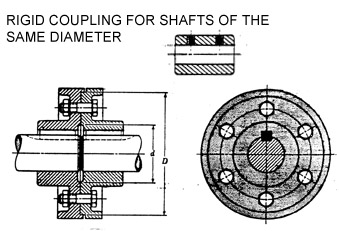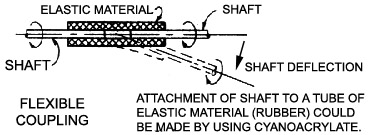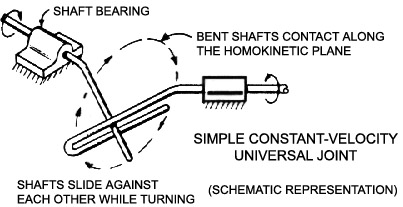
Couplings are connectors for shaft segments or shafts of different diameters. Couplings may also be required to jon shafts at angles, to compensate for misalignment between shafts, to prevent the transmission of overload power, or to alter the vibration and shock characteristics of the drive.
The rigid coupling consists of simple hollow cylinders having internal diameters of the proper size to fit over the shaft ends being joined. The coupling length depends on the desired shaft gap between ends. For light applications, the shafts are attached to the coupling by setscrews. Rigid coupling do not accomodate for misalignment.


Flexible couplings can be made of elastic materials, such as rubber, or have various other configurations. Flexible couplings can accomodate misalignment and motion during rotation.

A universal joint is essentially a combination of a rigid and a flexible coupling. They can transmit higher loads than flexible coupling with a greater misalignment than rigid couplings.
